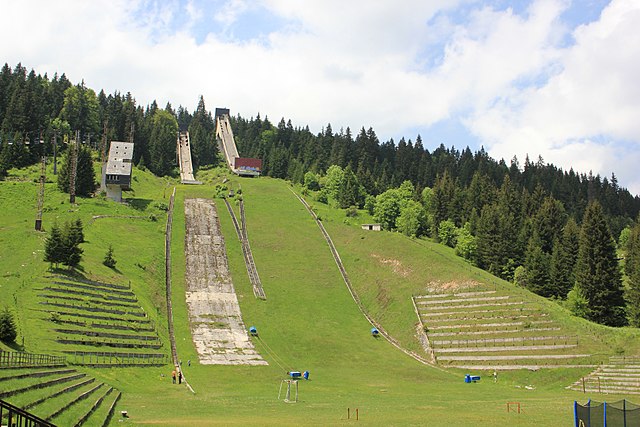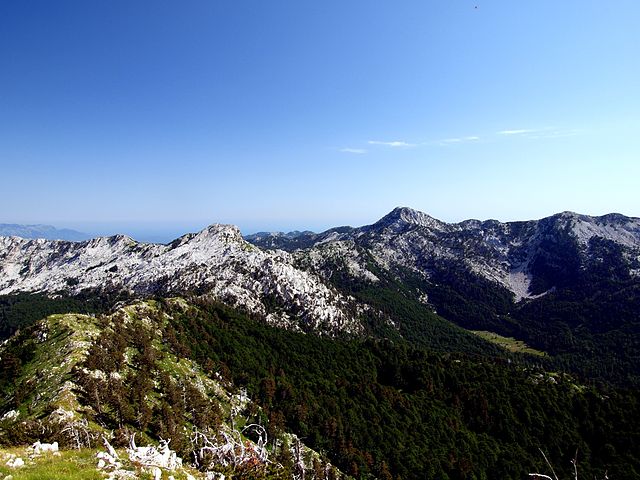Igman is a mountain plateau in central Bosnia and Herzegovina. Geologically, Igman is part of the Dinaric Alps and formed largely of secondary and tertiary sedimentary rock, mostly Limestone. It is located southwest of Sarajevo, bordering the Bjelašnica range in the south and west, Hadžići and Ilidža in the north, and the river Željeznica in the east. Igman's highest point, Crni vrh, west of the Malo Polje road, at an altitude of 1,510 metres, the homonym highest elevation on the east side of this road reaches an elevation of 1,502 metres. Most of Igman is covered with mixed forest with local pastures. Igman was the location of the lowest recorded temperature in the region, −43 °C (−45 °F). Igman was the site of extensive combat during the 1992-95 Siege of Sarajevo and certain areas, in particular the surroundings of former front lines, constitute a high mine risk.
Igman in winter
Ski jumping hills on Igman in spring
Sarajevo seen from Igman
Igman The former wartime supply road
The Dinaric Alps, also Dinarides, are a mountain range in Southern and Southcentral Europe, separating the continental Balkan Peninsula from the Adriatic Sea. They stretch from Italy in the northwest through Slovenia, Croatia, Bosnia and Herzegovina, Serbia, Montenegro, and Kosovo to Albania in the southeast.
Orjen spreads between Bosnia and Herzegovina and Montenegro and is the most heavily karstified range of the Dinarides.
Valbona Pass, northern Albania
Mount Mučanj, lower Dinarides, western Serbia
The surroundings of Foča. Bosnia and Herzegovina








